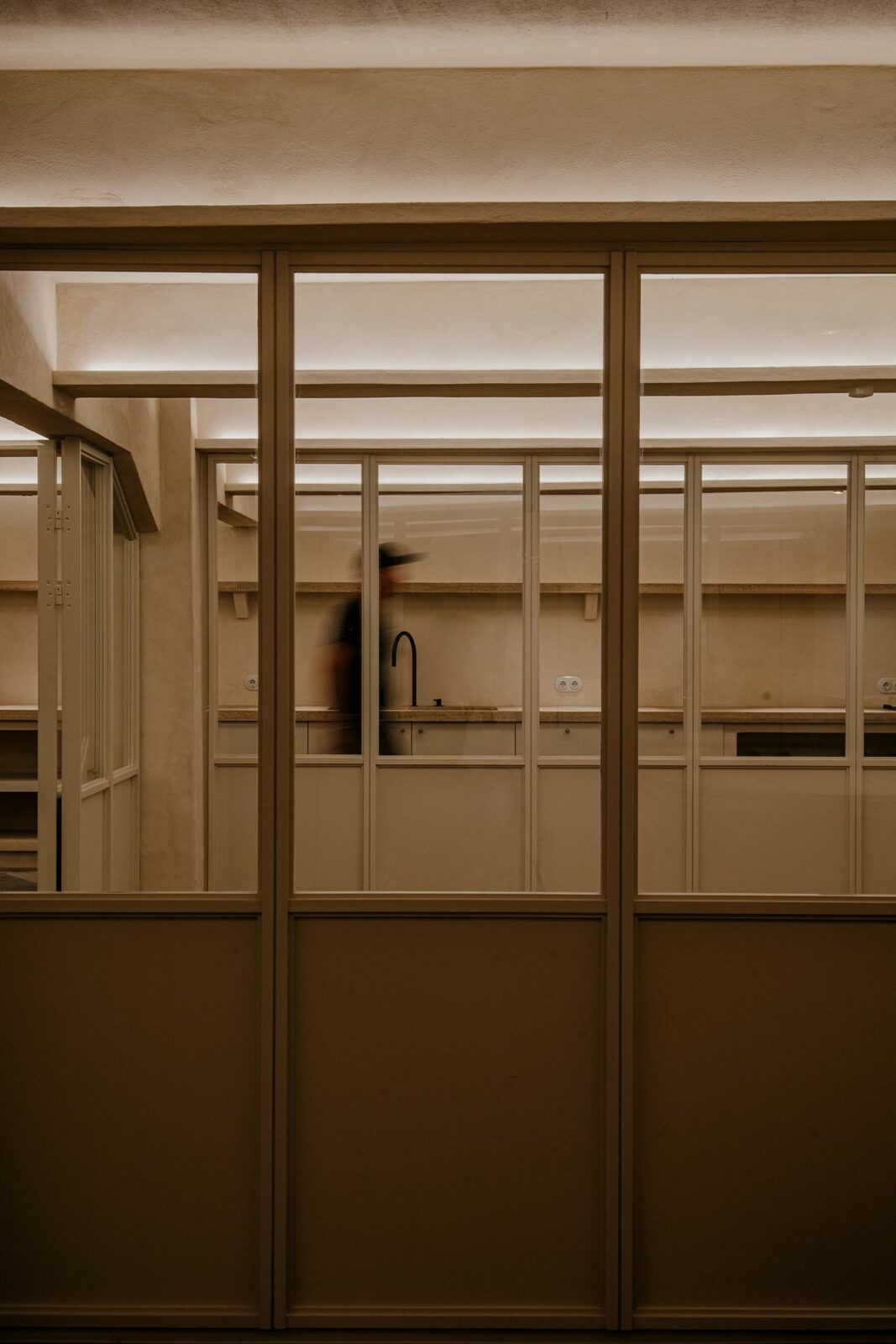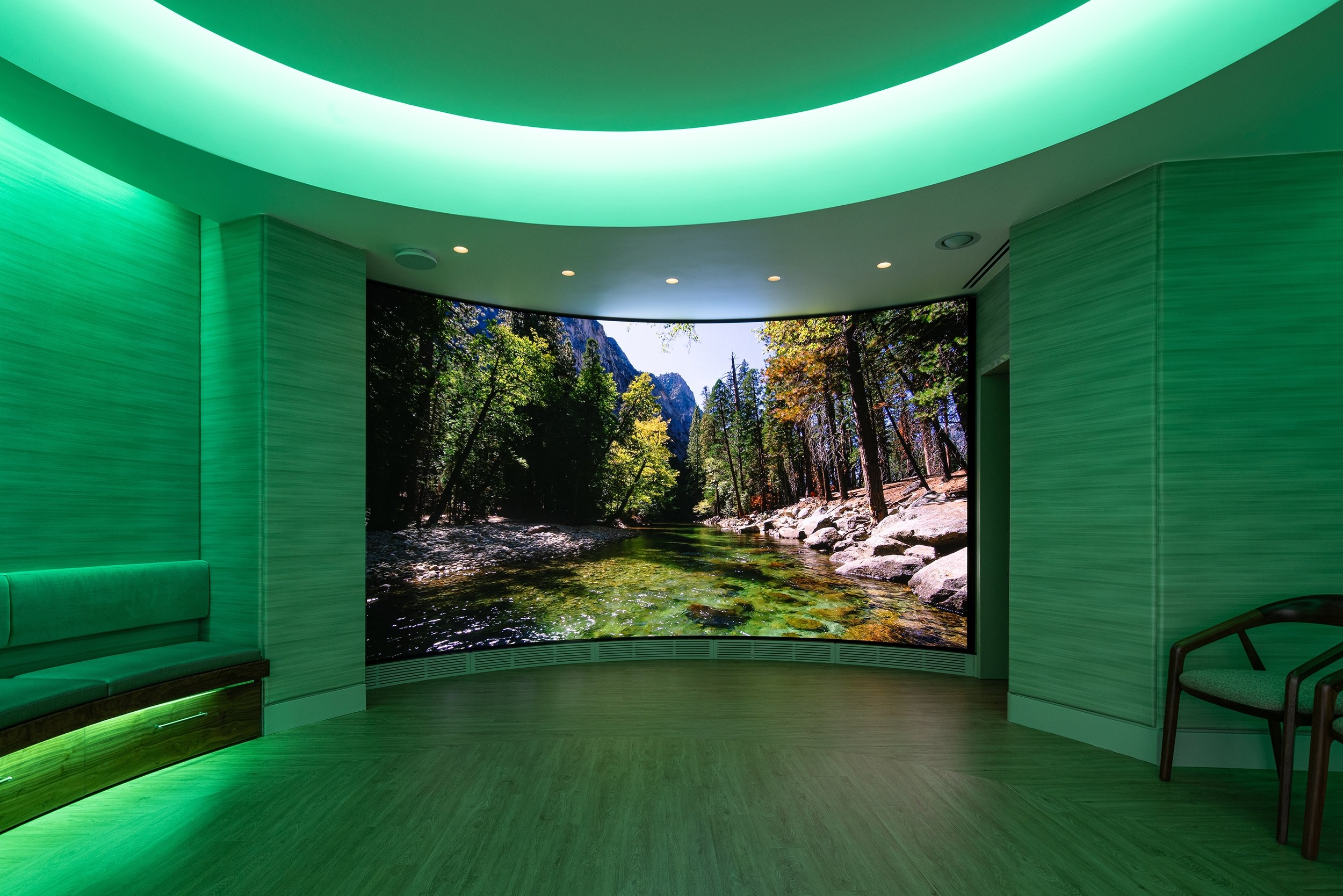Header: Longfei Wang
The award-winning St Leo Showroom, located in one of the original industrial buildings in North Harbour, a redeveloped area in Copenhagen, was designed to welcome art and the community in all shapes and forms. The building includes a showroom, an art gallery, office spaces, and even a small café. Still, the lighting design, which Studio Kasper Hammer developed in collaboration with Space Copenhagen, seems to tie everything together.
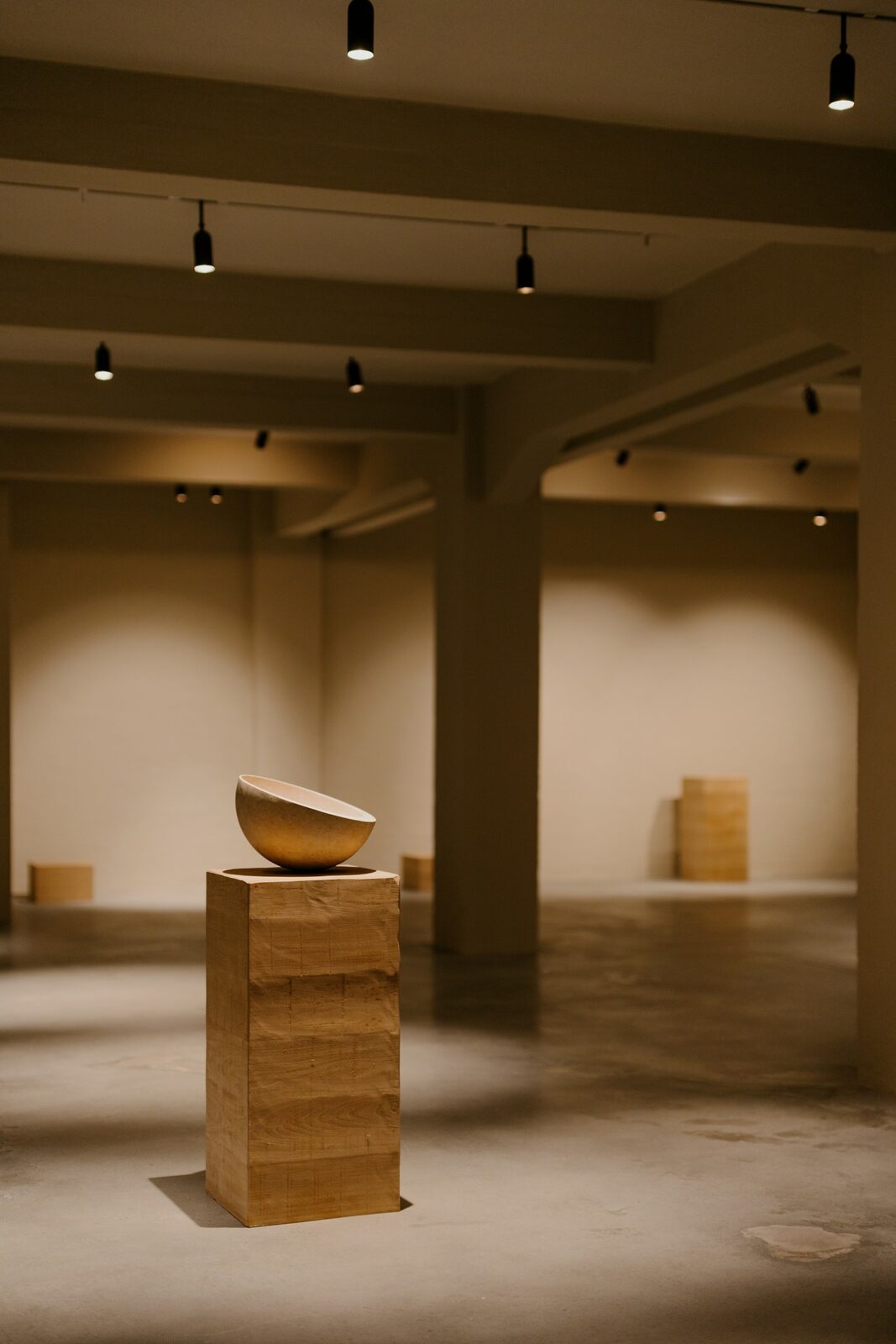
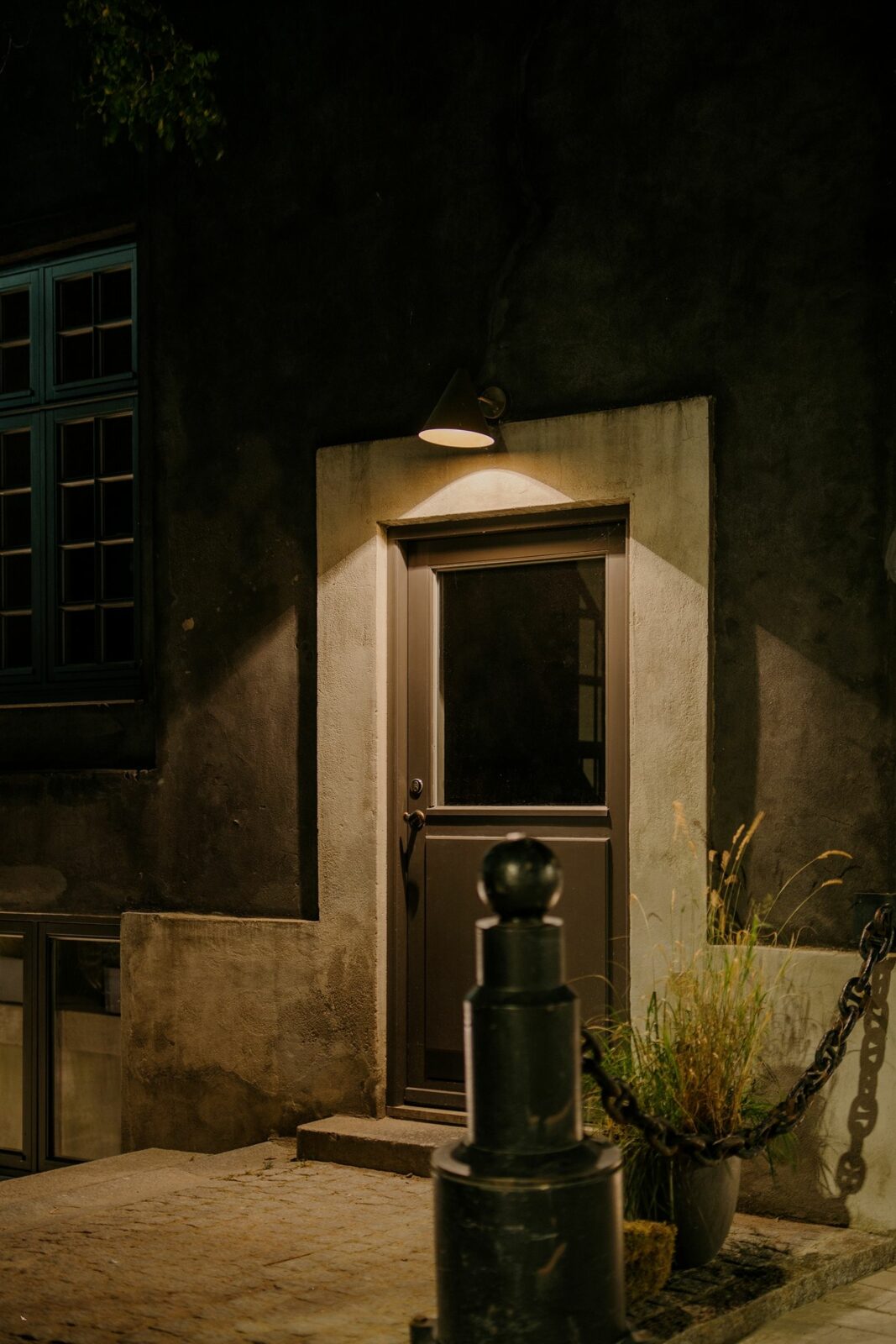
From room to room
No standard lighting fixtures were used because of the building’s layout and purpose. The designers decided that custom lighting elements were the way to go, as they wanted the lighting design to suit each zone’s dimensions, materials, and intended atmospheres. In the office areas, where natural daylight is limited, the team added a tunable white light system that provides indirect illumination from the ceiling, which is supplemented by spotlights in browned brass. These fixtures were designed to complement the space’s material palette and offer the perfect brightness without relying on visible direct light sources.


A set of wall-mounted lamps lines the staircase, guiding visitors and employees upwards towards the café and gallery. The space’s industrial aesthetic, with its columns and cement dressing, allows for flexible display configurations and focused illumination of art pieces. The lighting in this area was adjusted to balance the large spatial volume while maintaining a soft spotlight on the artwork.
Further into the upper floor, the St Leo showroom presents a curated display of materials, pigments, and plaster finishes. Lighting here was configured to provide both a warm ambient environment and accurate colour rendering, allowing visitors to observe the textures and tones of the materials under various light conditions. A wireless control system allows the light temperature and intensity to be adjusted, which is particularly useful for showing colour variations during the darker seasons.

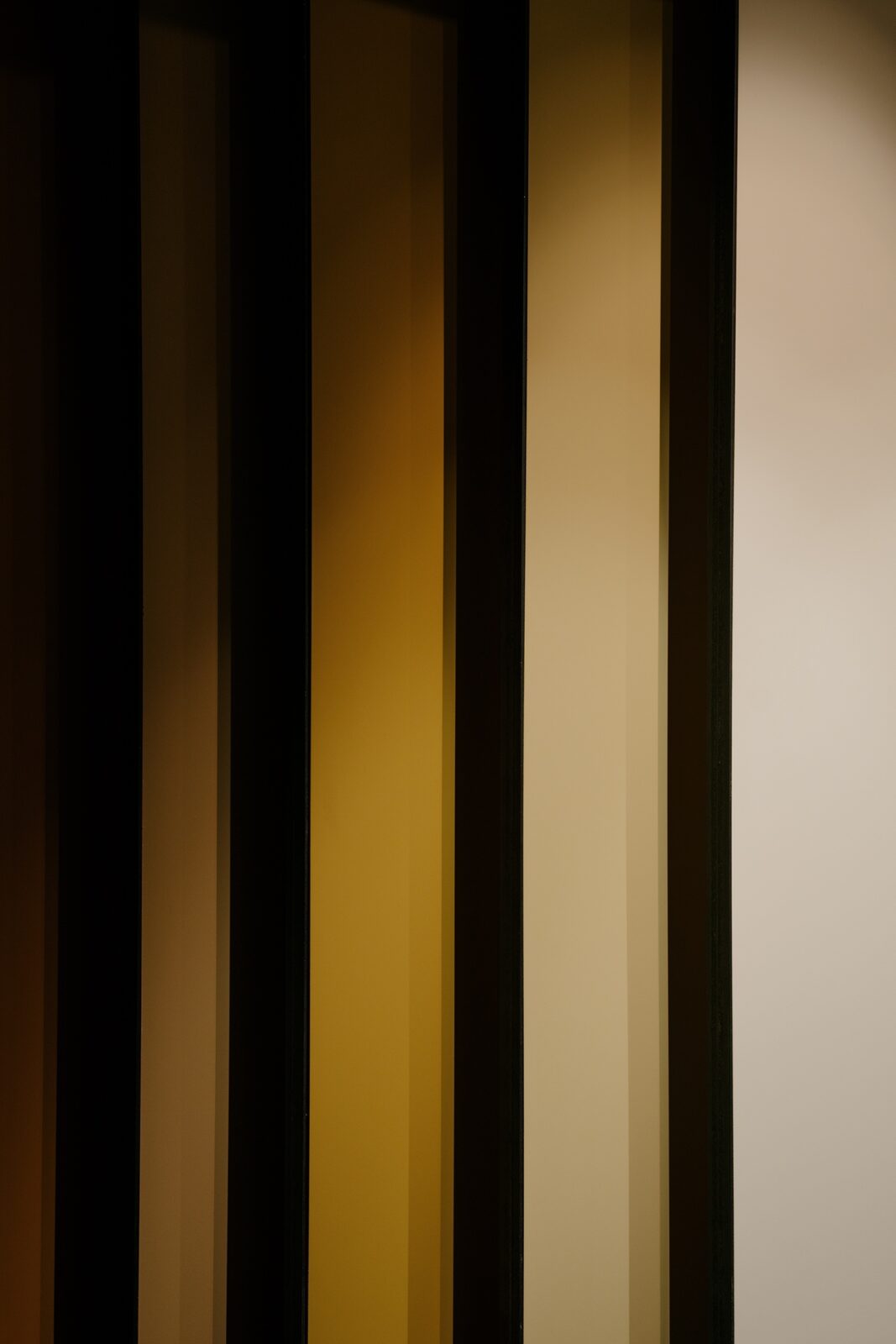
Sustainability
By dimming areas of temporary or transitional use, such as corridors and shared zones, the energy use was reduced without compromising comfort. All fixtures were designed with longevity in mind, as all components can be replaced or worked on over time.
